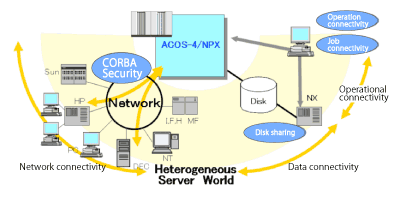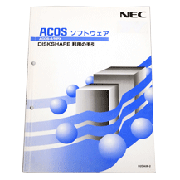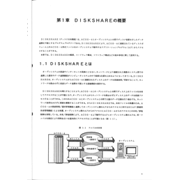ACOS-4/NPX (which stood for “new parallel extended”) was an operating system designed for NEC’s mid-size and large mainframes. NEC announced and started shipping the operating system in April 1998.
ACOS-4/NPX was designed to be an operating system that underpinned enterprise information systems for the Web computing age, in which the Internet was the core communication medium. With this goal in mind, ACOS-4/NPX supported standard Web protocols, provided security management infrastructure, and offered high-speed data connectivity and bidirectional operational connectivity with open systems. The operating system was installed on the PX7600SV and PX7800SV Parallel ACOS mainframes, which were announced in October 1998.
The main features of the operating system are given below.




